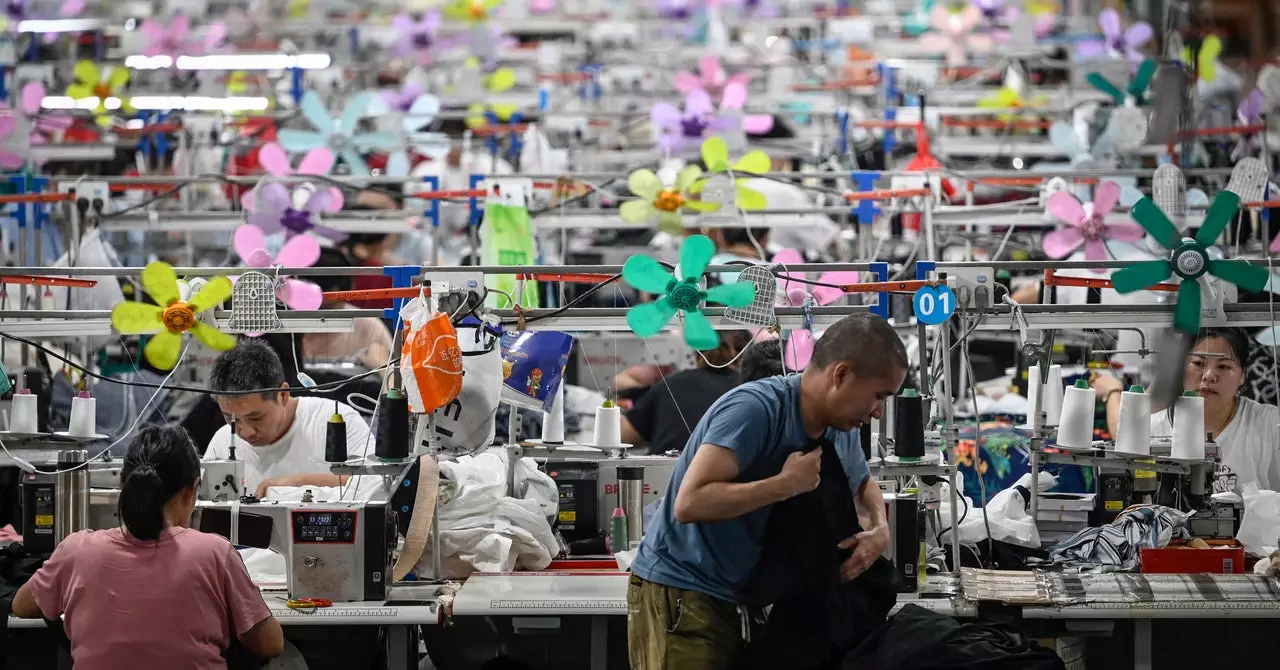The world of fashion is no stranger to cycles of change, but the emergence of brands like Shein has defined a new era that is both alarming and fascinating. Dramatically altering the pace and scale of production, Shein epitomizes the far-reaching effects of technology in the fashion industry, especially the integration of artificial intelligence. However, the implications of such rapid growth extend beyond consumer choice and convenience, raising critical questions about environmental sustainability and labor ethics.
Shein’s meteoric rise is a case study in the potential of digital retail. Established merely over a decade ago, Shein has morphed into a global titan, generating upwards of $30 billion in revenues in just 2023. With tens of millions of active customers and a staggering ability to release up to 10,000 new items daily, the company has adeptly leveraged social media marketing, particularly through influencer collaborations that amplify its reach. The ubiquitous #sheinhaul on platforms like TikTok and Instagram has transformed the brand into a household name, championing an image of accessibility and up-to-the-minute fashion trends.
However, it is this relentless approach to consumer engagement that paints a troubling picture, intertwining fast fashion with an urgent inquiry into sustainability practices. As Shein’s business model accelerates, critics argue that the very mechanisms driving this speed—primarily AI-driven strategies for inventory and customer preference analysis—may also exacerbate environmental consequences.
Artificial intelligence plays a critical role in Shein’s operations by offering sophisticated data analysis that gauges customer preferences and predicts demand with uncanny accuracy. This capability allows Shein not only to meet consumer desires but to do so at lightning speed. Nonetheless, this efficiency comes with its own set of problems. The reasoning behind AI-centric operational practices is less about fostering a sustainable future and more about pushing the envelope on fast fashion to create what might be called “ultra-fast fashion.”
Sage Lenier, the executive director of Sustainable and Just Future, articulates this concern well, suggesting that AI is instrumental in sustaining this high-velocity model. She states, “They quite literally could not exist without AI.” Furthermore, rival ecommerce entities such as Temu follow closely in Shein’s footsteps, feeding into a cycle that places economies of scale over ethical considerations.
Despite public commitments to reduce carbon emissions—25 percent by 2030 and net-zero by 2050—Shein’s internal practices raise alarming red flags in the context of climate change. The company’s third annual sustainability report revealed a shocking doubling of its carbon emissions from 2022 to 2023, reaching 16.7 million metric tons—equivalent to emissions from four coal-fired power plants over a year. Such figures should give pause to environmental advocates, who argue that the current fast-fashion model is unsustainable in the face of an ever-worsening climate crisis.
Moreover, Shein’s fulfilment of global demand could foster extraordinary levels of textile waste and unwanted inventory, leading to environmental chaos manifested through overflowing landfills and increased levels of microplastic pollution. The very garments hailed as trendy often contribute to a disposable culture, where clothes are worn only a few times before being discarded.
To make matters worse, Shein’s aggressive scaling raises ethical questions about labor practices. Reports of exploitative working conditions within the garment industry are well-documented, and Shein is no exception. The push for low prices and fast turnaround times often translates into grim realities for workers in manufacturing hubs. Behind every bargain-priced garment lies a narrative of sacrifice and hardship, further complicating the ethical dimensions of its business model.
Although the fashion industry faces a broader scrutiny of labor conditions, Shein’s model continuously highlights a disconcerting pattern where profit maximization overshadows human welfare and environmental integrity.
As Shein continues to dominate the fast-fashion landscape, the discourse must shift toward reconciling speed with sustainability and ethics. The dual pressures of consumer demand and environmental accountability necessitate an urgent reevaluation of practices across the fashion industry. Only by embracing transparency and committing to genuine reform can companies like Shein hope to navigate the treacherous waters ahead—where technology, consumerism, and environmentalism intersect in a bid for a more sustainable future. The time for action is now; the clock is ticking, and the stakes have never been higher.


Leave a Reply